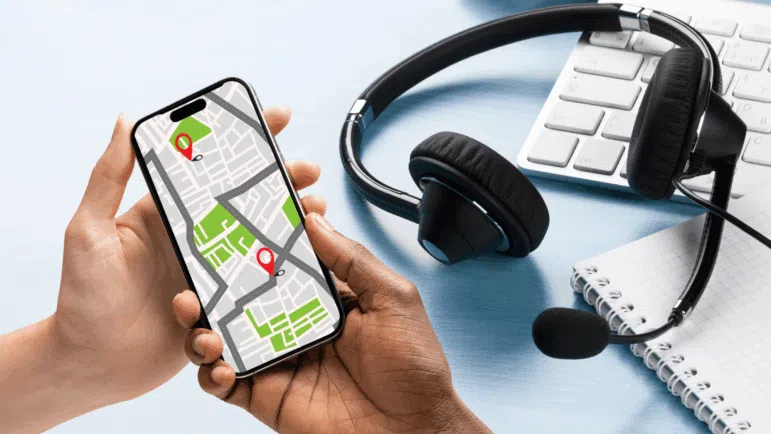The Power of Digital Accompaniment
What is Digital Accompaniment?
Whether it is walking with individuals to retrieve firewood, or being present for human rights defenders at high-risk events, or traveling, protective accompaniment is a core practice of Unarmed Civilian Protection (UCP). Protective accompaniment emphasizes a person’s presence to deter violence and create safer spaces.
At NP, we physically accompany or walk with individuals and communities facing threats, reducing risks through nonviolent engagement, relationships, visibility, and deterrence rooted in solidarity and witness—not force. This approach centers those being accompanied, reinforcing that they are not alone while ensuring their protection efforts remain community-led.
While physical presence is crucial, in our world today, accompaniment increasingly includes remote support, guidance, and real-time information sharing: this is Digital Accompaniment.
Digital Defenders Partnership frames digital accompaniment as a long-term, tailored response to protect human rights defenders—moving beyond one-off trainings to offer sustained support, remote safety monitoring, information flows, and moral solidarity. If you have ever asked a loved one to message you when they arrive home safely, or alerted a friend about a storm along their driving route, you’ve done this before.
A Critical Tool in Crises
In humanitarian emergencies, access to real-time, accurate information can mean the difference between safety and danger. As conflicts escalate or natural disasters strike, civilians often face life-threatening situations with restricted movement, limited connectivity, and little access to reliable updates. Digital accompaniment enables people to share skills, exchange updates, and coordinate safe movements when traditional humanitarian access is blocked.
When civil war erupted in Sudan, one NP staff member—Nina*—was visiting her family outside the country for Ramadan. Suddenly unable to return, she became a lifeline for the people she had met during her time working in Darfur. Through her phone, Nina stayed in touch with dozens of civilians attempting to flee. She checked in constantly, asking how they were doing, offering encouragement, and helping them navigate evacuation routes. On the ground, the situation was chaotic. Different exit points opened and closed unpredictably. Word began to spread that Nina had up-to-date information—sometimes relayed by families with patchy phone service—and people began sharing her contact. She became a digital accompanier, confirming which routes were open and which crossings had closed. Even when she couldn’t guarantee safety, her messages offered clarity, connection, and critical psychosocial support. Civilians knew someone was looking out for them—even from afar.
Integral to Civic Engagement
Digital accompaniment is also a powerful tool for safe civic engagement, especially during protests, public actions, and community events. It allows remote allies to support frontline organizers by monitoring risks, sharing real-time updates, and documenting threats or violations from afar.
During the 2021 protests following the killing of Daunte Wright in Minnesota, digital accompaniment became a critical support system. One NP team member monitored police radio channels and livestreams from a remote location, relaying real-time updates to colleagues on the ground via secure communications. These updates were vital in a rapidly shifting environment, where police lines advanced without warning and curfews were changed without public announcement. The team on the ground was sheltering from police use of tear gas, pepper spray, and pepper balls, which were deployed without dispersal orders on some nights. This information allowed protection teams to adapt in the moment—evacuating a pregnant woman who hadn’t realized the escalating risk, and guiding several young Black men whose parked car had become trapped behind the newly expanded police line. In one critical moment, remote guidance helped the team shelter in a dugout and later escape safely after being surrounded. The digital flow of information—combined with holistic check-ins and coordinated tactical communications—enabled the safe navigation of a volatile and unpredictable landscape.
Digital accompaniment also opens up new entry points for people who may not be able to participate in person. Disabled activists, caregivers, and others with limited mobility or geographic access can still contribute meaningfully through remote safety monitoring, information sharing, and care coordination. As disability justice advocate Mia Mingus reminds us, access is not just about logistics—it's about creating collective liberation through interdependence and connection. Civic engagement becomes more inclusive when technology enables multiple forms of presence and solidarity, expanding who can participate and how.
Overcoming Challenges
However, digital accompaniment is not without challenges. Surveillance, internet shutdowns, and misinformation campaigns can hinder real-time support. Governments and armed groups have weaponized digital tools to track and target civilians, making secure communication and digital literacy essential for those engaged in protection work. NP and its partners continually adapt, using encryption, decentralized networks, and alternative communication methods to safeguard those they accompany.
Digital accompaniment also includes quieter, less visible acts of solidarity. Organizers facing uncertainty or burnout often reach out to trusted peers—not for directives, but to bounce ideas off someone who understands, outside of emergency moments or specific actions. This kind of peer-to-peer consultation, even when done remotely, reinforces community-led action while helping groups troubleshoot and prepare together. Holding space in this way is its own form of protection: attentive, responsive, and deeply human.
Digital accompaniment is one way to make sure people do not have to navigate danger or recovery alone, offering connection, visibility, and critical support—even from a distance.
*Name changed

